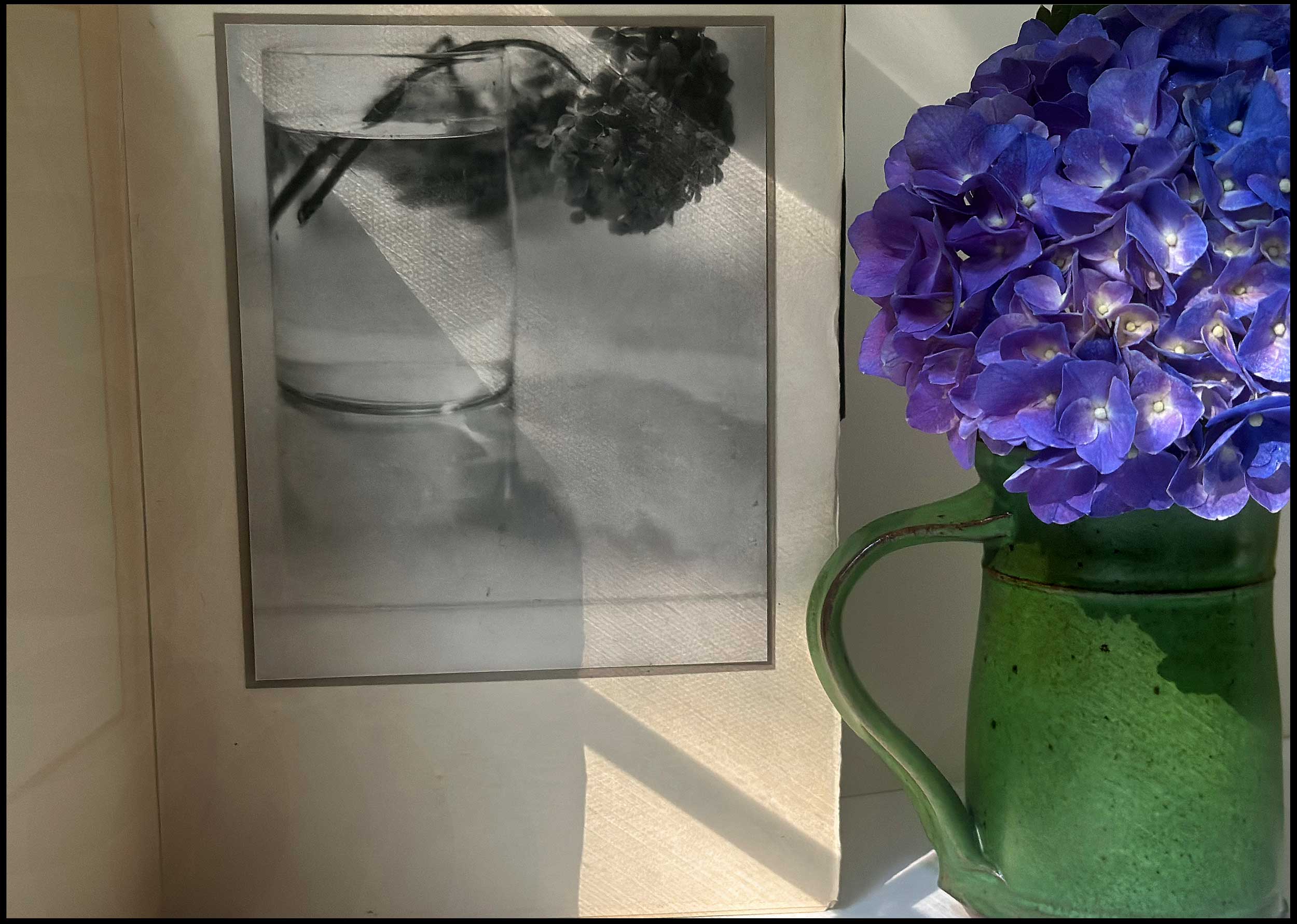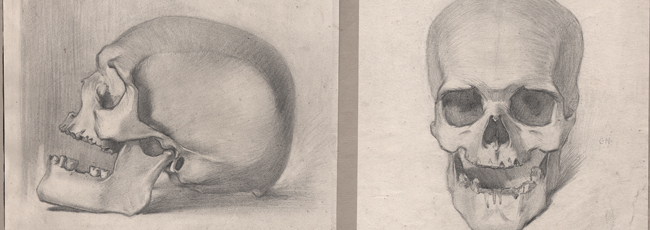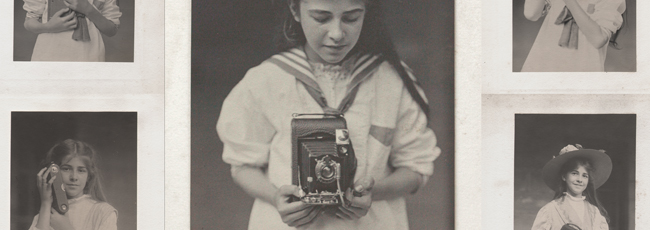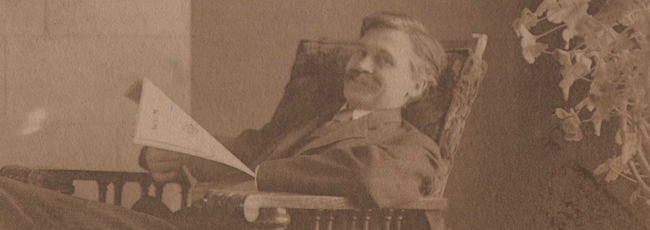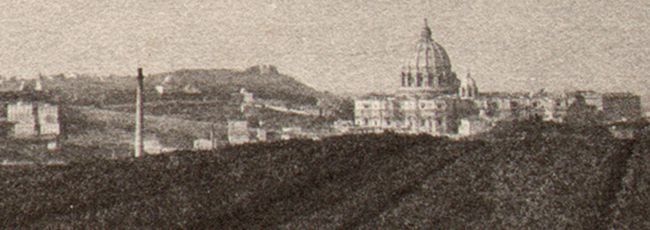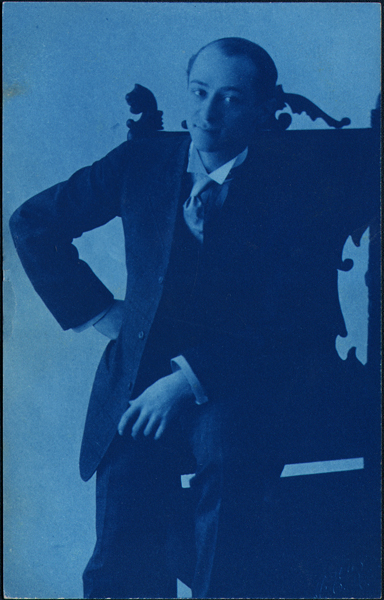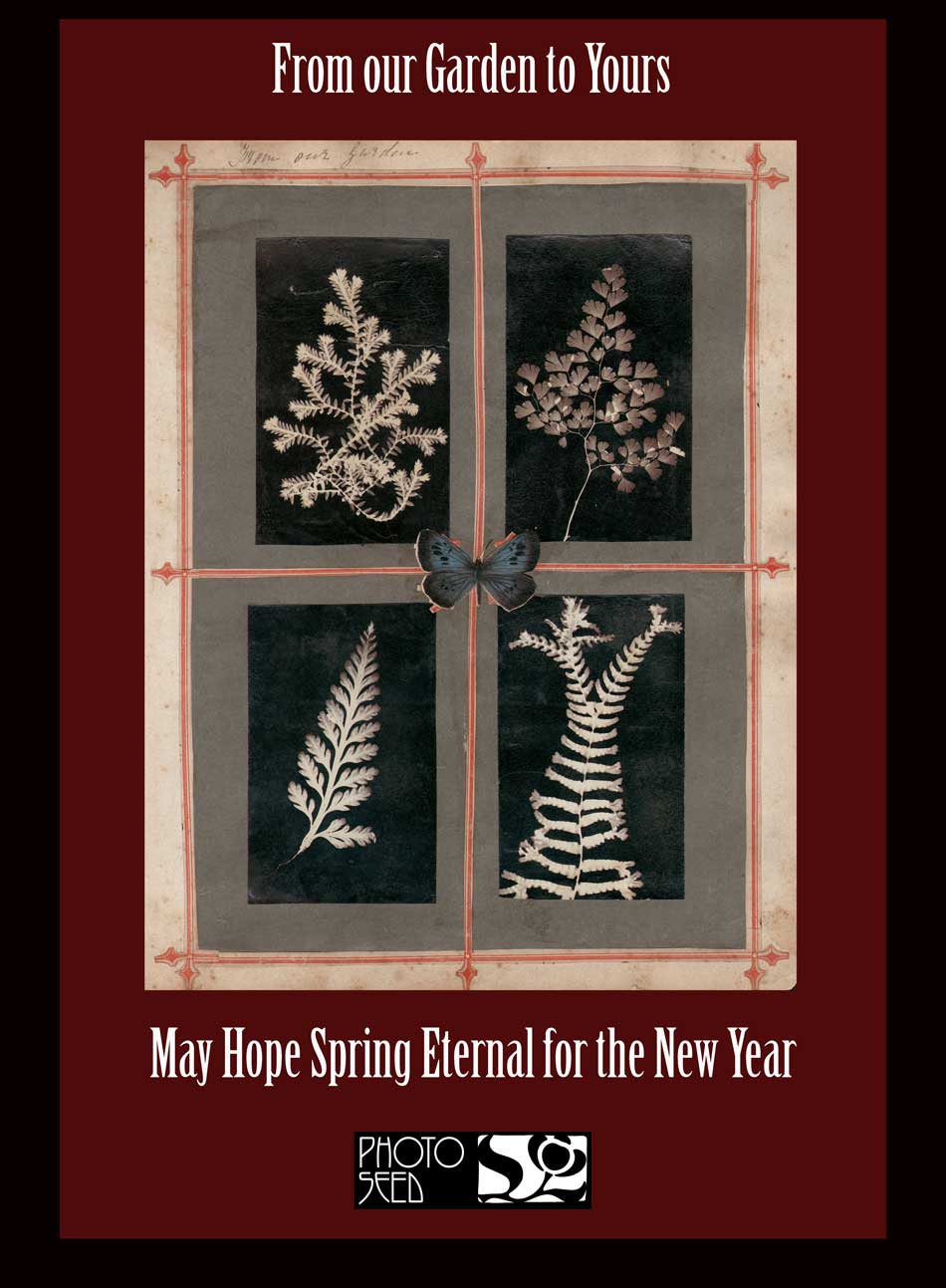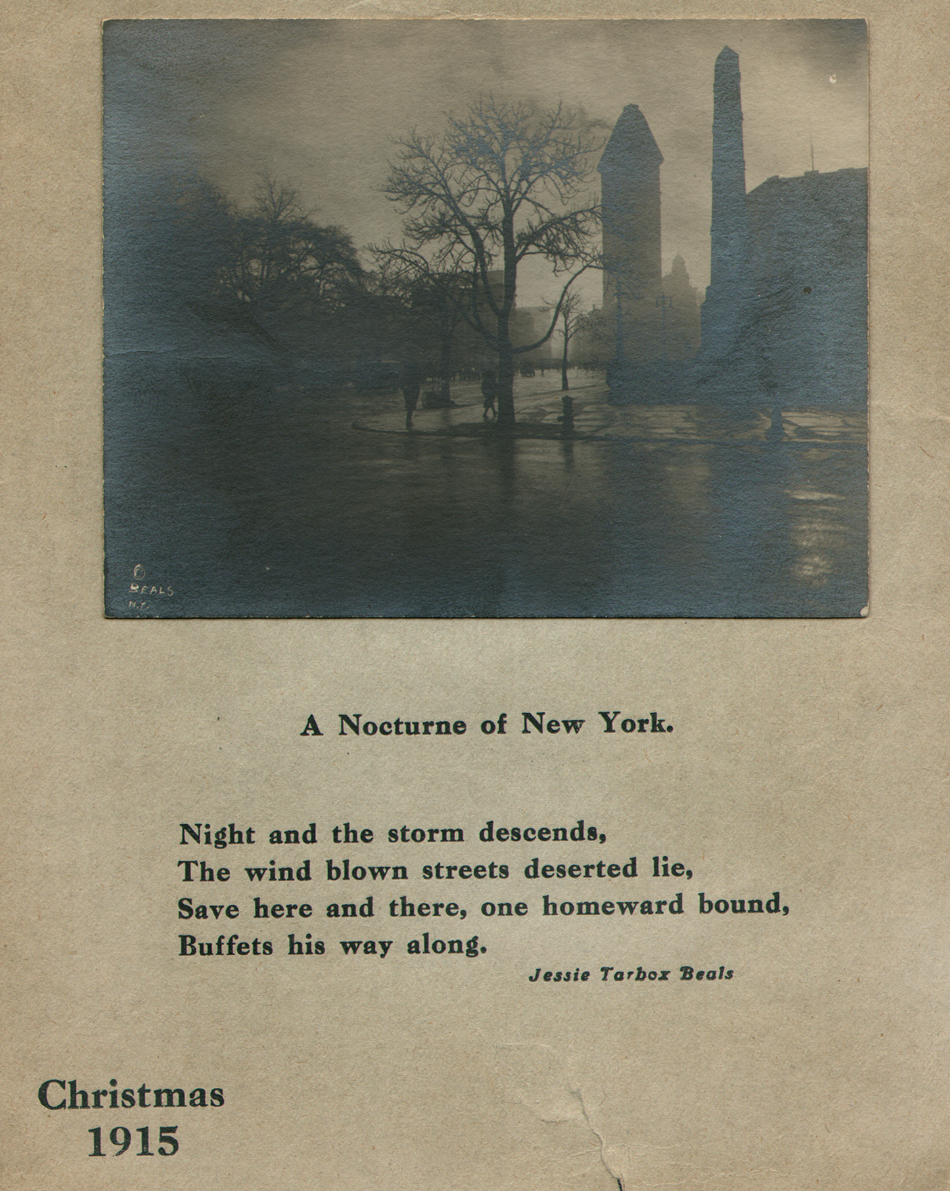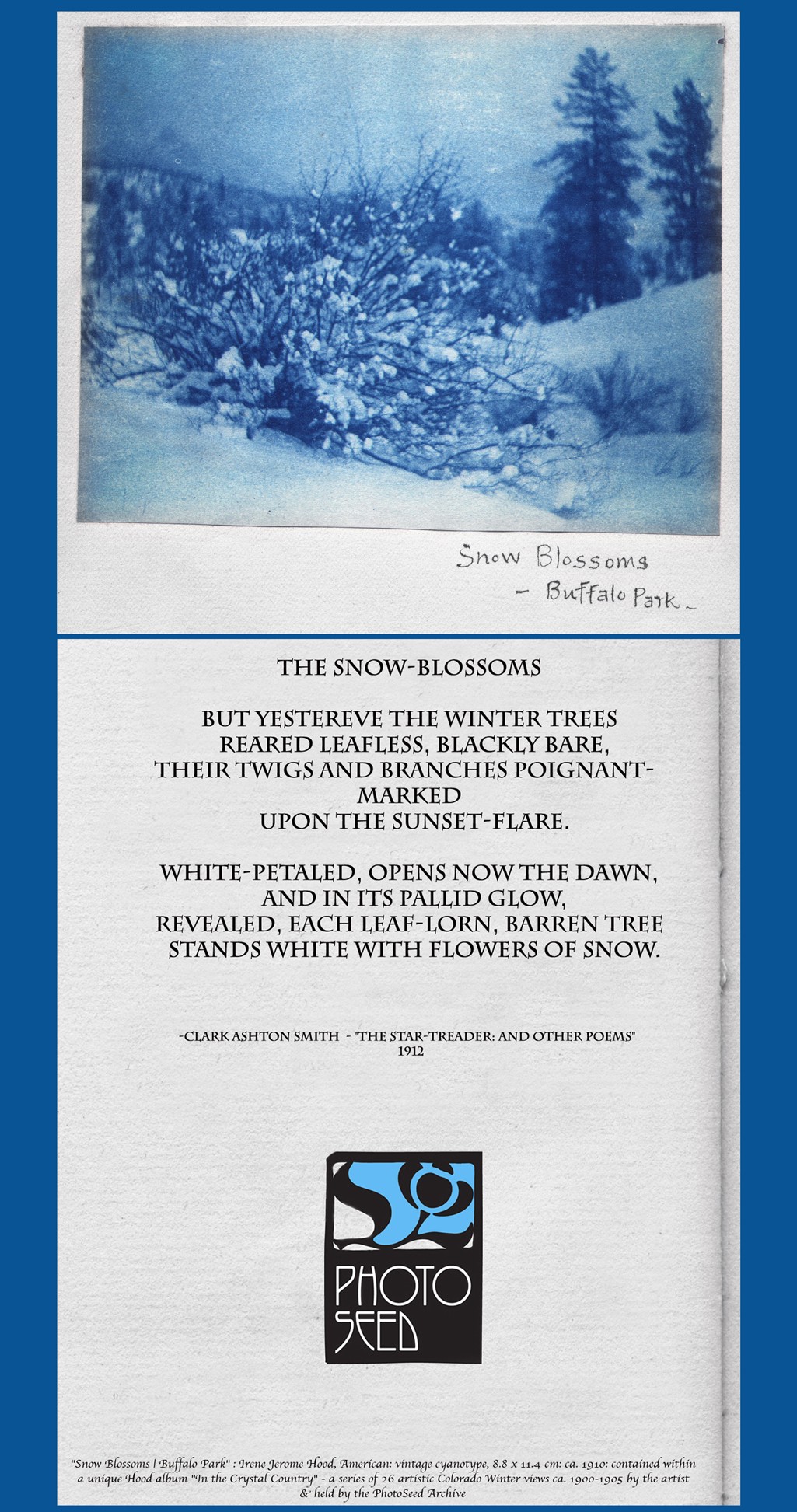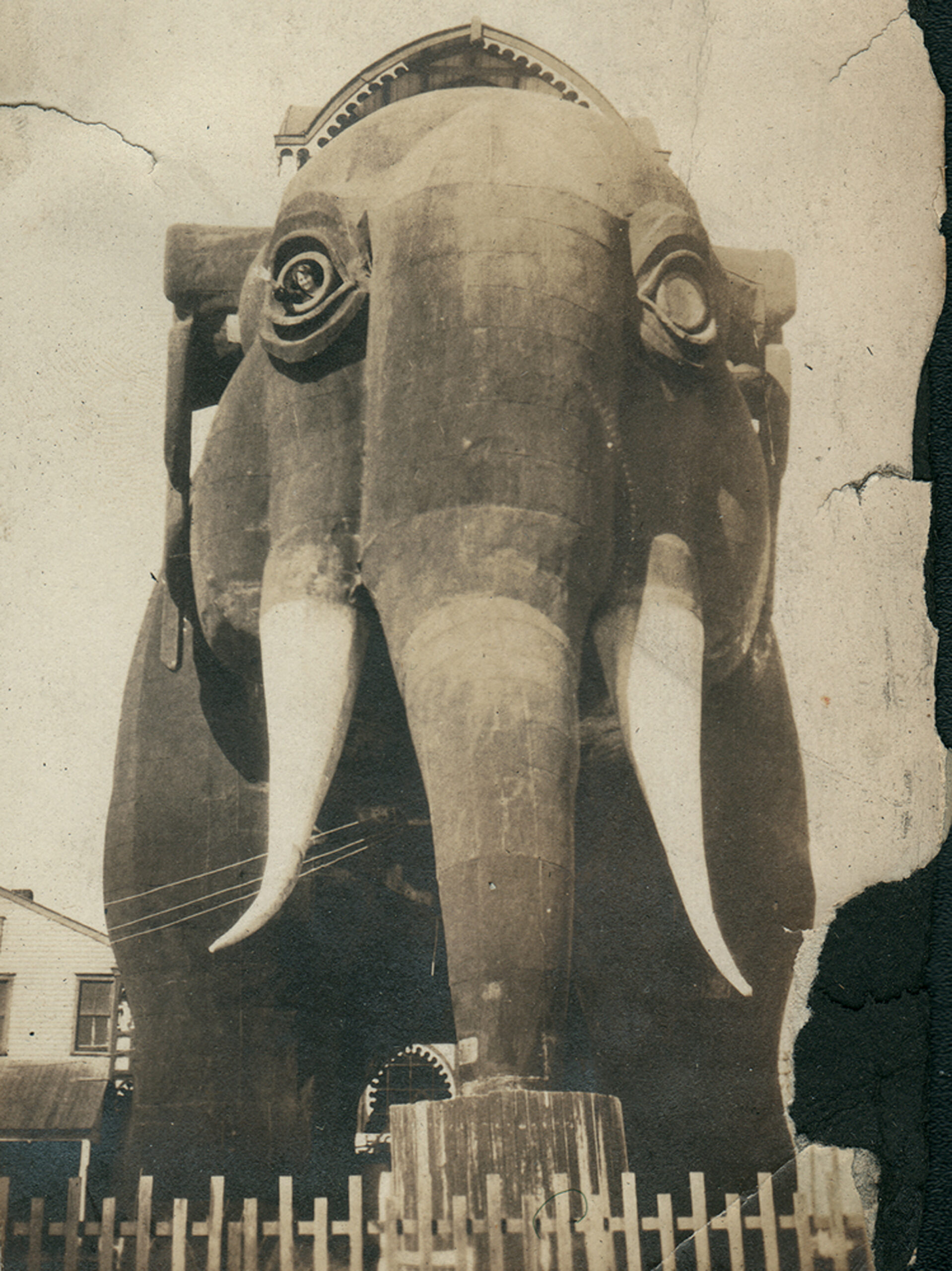
“Waving from the Eye of Lucy the Elephant, Margate New Jersey”: Unknown American photographer, ca. 1915-25: gelatin silver snapshot pasted on larger album leaf of nine photos: 10.2 x 6.5 cm. Lucy’s head is 16 feet long and 48 feet in circumference; her neck is six feet long and 48 feet in circumference. The snapshot was included in an album of creative photographs (1890-1930) found in a Long Island, N.Y. thrift store. With additional Margate or shoreline New Jersey locales depicted along with many unknown portrait subjects, the eclectic album features rare photos of American silent era film actress Marjorie Daw (1902-1979) from 1920 and even a photograph of a man resembling Russian Ballet dancer Vaslav Nijinsky (1889-1950) dressed in the role of “Afternoon of a Faun”. From: PhotoSeed Archive
I’ll admit I’m a sucker for roadside oddities of the purely Americana kind. As a working photojournalist I chronicled the handiwork of numerous “folk artists” and passionate creators who left their mark on the land. These often took the form of oddities sculpted in wood and other materials, like fiberglass. To wit, check out my photograph of “Pinky” the elephant hoisting a martini while making her way through a Midwestern snowstorm later in this post.
In addition, I’ve long been a fan of created environments such as those by visionary artists including the late Howard Finster of Summerville, GA whose Paradise Garden can still be visited today. In Florida, I remember a giant alligator the size of a city bus beckoning tourists heading to the Disney resorts as well as a colossal Paul Bunyon and his faithful blue ox Babe in Klamath, CA: a roadside diversion my future wife and I visited while in route to Seattle.
The one oddity I have not visited yet, and the subject of this scribbling, is the famed Lucy the Elephant roadside attraction in Margate City, New Jersey. Six stories tall and originally built and named the Elephant Bazaar by Philadelphia resident James Lafferty in 1881, she was later moved in 1970 to her present location in Margate’s Josephine Harron Park to escape demolition. Completely refurbished by 2000, Lucy had already been deemed worthy, in 1976, to be listed on the U.S. National Park Registry of Historical Landmarks. The fascinating history of Lucy can be found on her official website, which includes a merch store to support ongoing preservation.
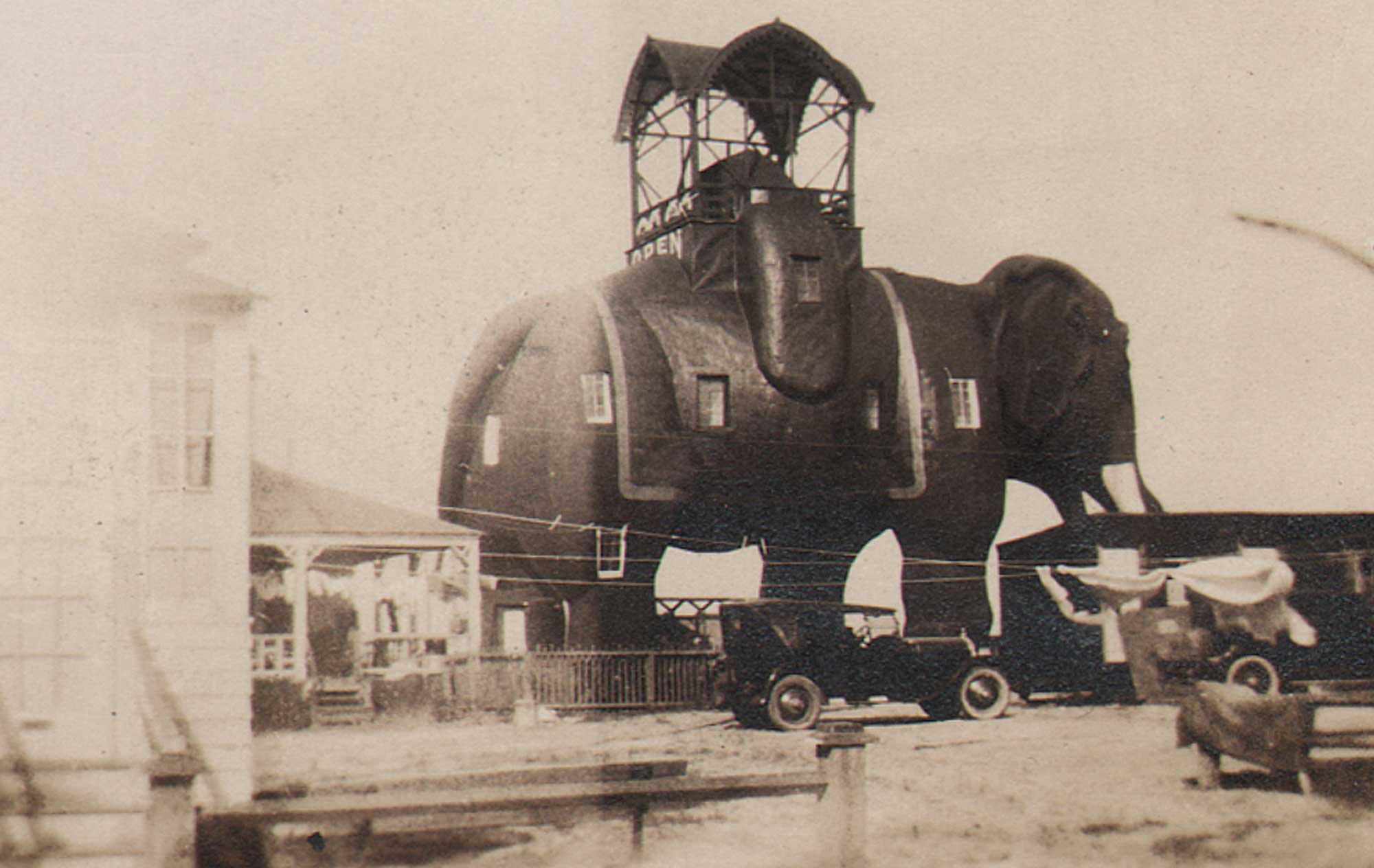
“Profile View of Lucy the Elephant with Clothesline and Automobiles, Margate New Jersey”: Unknown American photographer, ca. 1915-25: loose, gelatin silver snapshot : 5.1 x 7.4 cm. Purchased for this archive in 2019 from an Arkansas based seller, this snapshot may date to the years when a building on the grounds adjacent to Lucy known as the Mansion House- a speakeasy- was converted to a rooming house after 1920: the year the US Volstead Act outlawed the sale of alcohol- thus the domestic details of clothes hanging on a line seen at far left of image. Lucy is six stories tall and covered in tin metal. From: PhotoSeed Archive
For some reason, the subject of elephants keeps cropping up in this site’s collection efforts. Jumbo the elephant- or at the least the stuffed version- was the subject of a March, 2015 blog post on PhotoSeed, and in keeping with that spirit, a small collection of historical snapshots of Lucy the Elephant from Margate, New Jersey that are believed to date from the late 1910’s into the 20’s makes up this present gallery post.
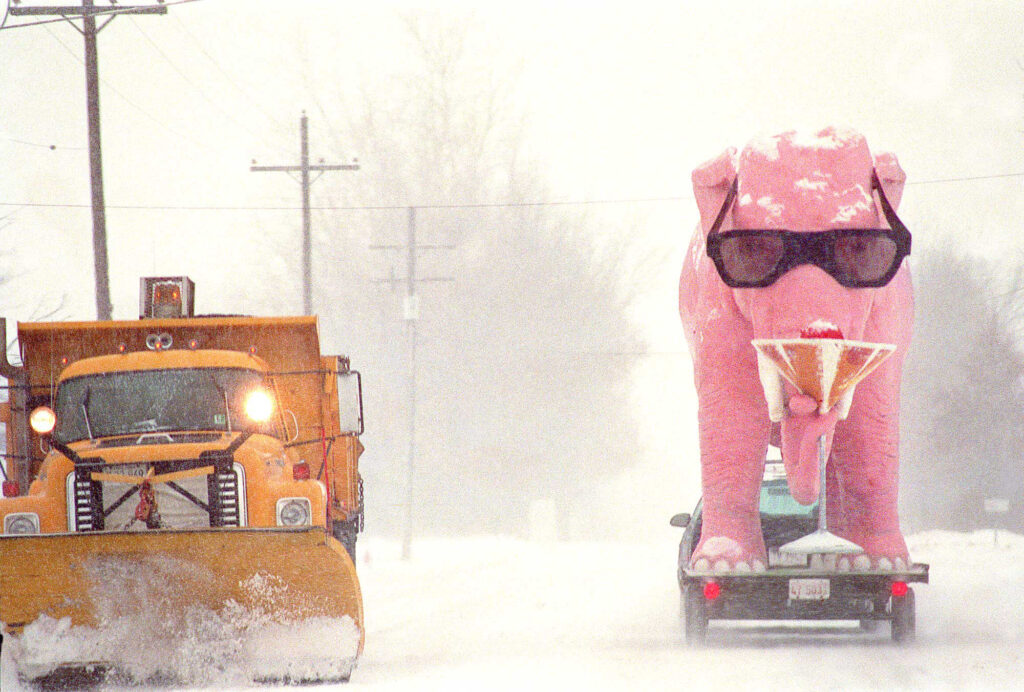
Not Summer but Winter: Photographed through my windshield while on assignment for the State Journal-Register newspaper in Springfield, IL, I captured Pinky the elephant-wearing her sunglasses and hoisting a martini while being transported on a trailer as a snowplow drives past during a 1990 Midwestern snowstorm in Riverton, IL. Owned by the Kent Family, Pinky is now 45 years old in 2024 and still a presence and delight to those in Central Illinois. Photo by David Spencer
In anticipation of summer travels, in May of this year, the newspaper USA Today released the results of their annual readers choice for the Best Roadside Attraction of 2024, and you guessed it, Lucy was voted the number one attraction. Enjoy this roadtrip down memory lane.
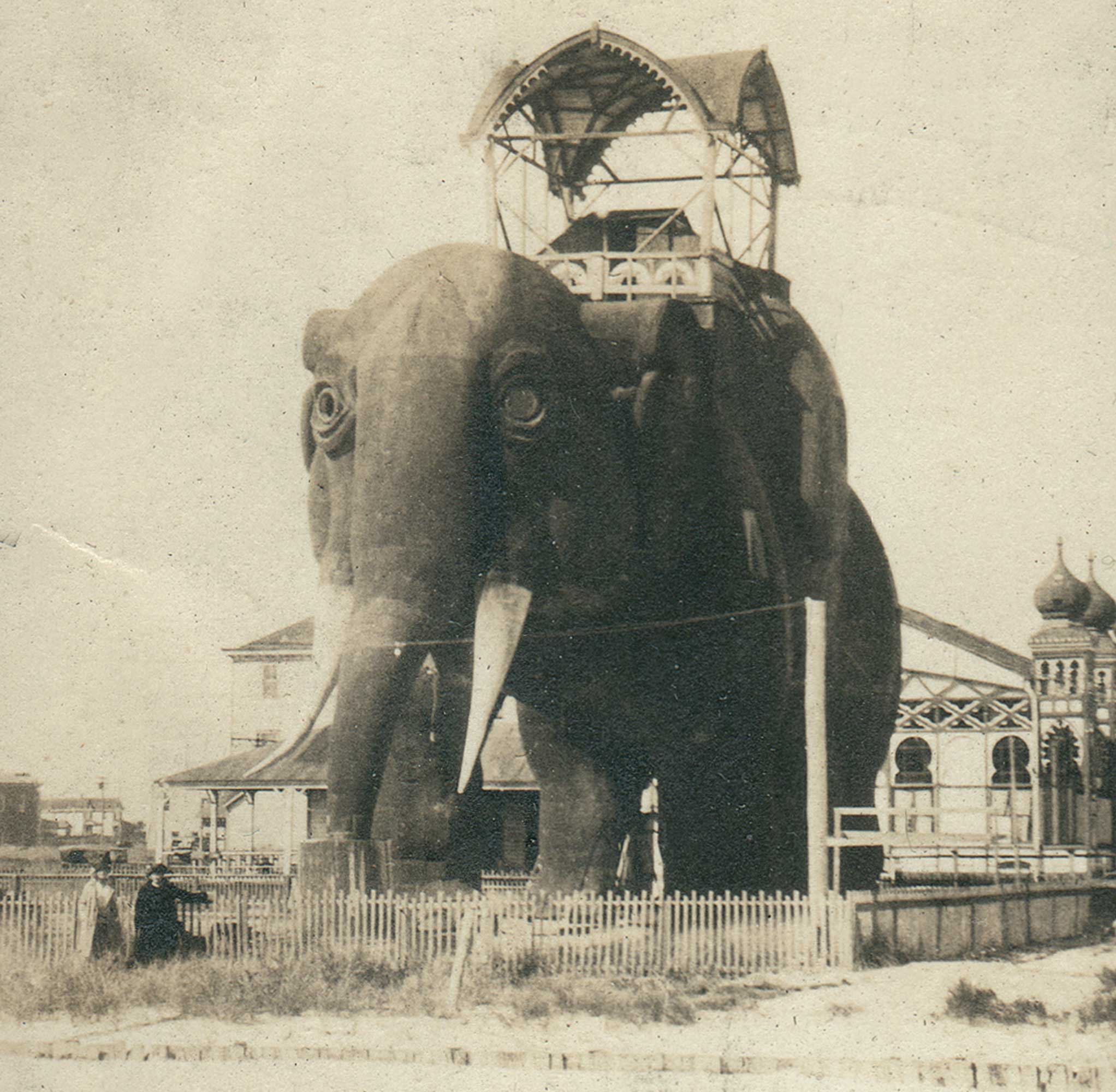
“Women Pose in front of Lucy the Elephant, Margate New Jersey”: Unknown American photographer, ca. 1915-25: gelatin silver snapshot pasted on larger album leaf of nine photos: 6.2 x 5.0 cm. In background at right, several of the onion-shaped domes of the former Turkish Pavilion, originally constructed in 1876 for the Centennial Exhibition in Philadelphia’s West Fairmount Park, can be seen. The structure became a popular nightclub for many years after it was disassembled piece by piece at the conclusion of the fair and erected behind Lucy by owners the Gertzen family at an unknown date. Visitors were charged 10 cents to tour the furnished interior of the Elephant building and climb the 130 stair spiral stairway to the howdah or observatory on its back. From: PhotoSeed Archive
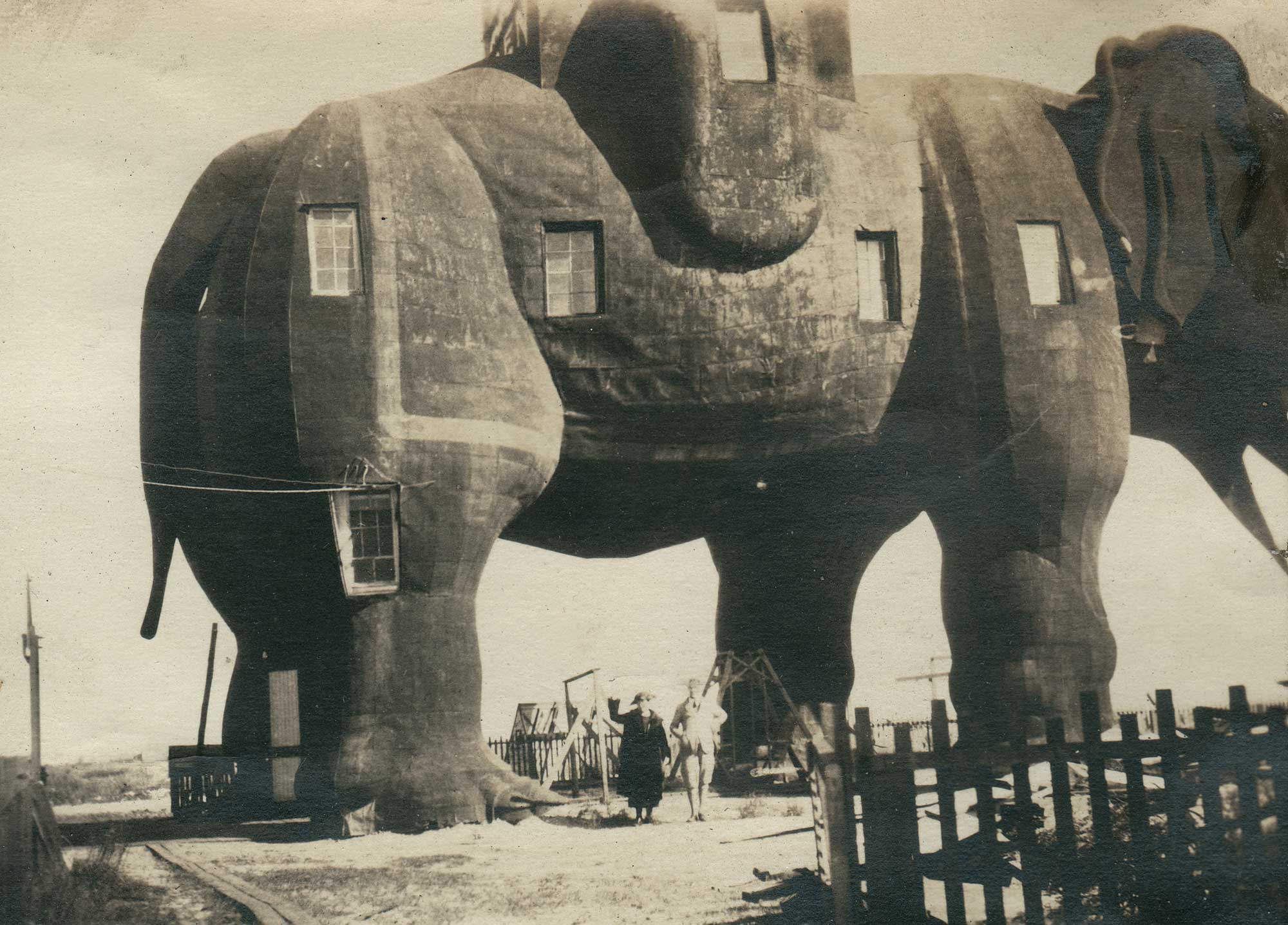
“Woman waves alongside Companion next to Lucy the Elephant, Margate New Jersey”: Unknown American photographer, ca. 1915-25: gelatin silver snapshot pasted on larger album leaf of nine photos: 7.6 x 10.1 cm. Power lines can be seen just above the window at left located in one of Lucy’s rear feet. A few more statistics from Lucy’s official website: “Entrance stairs lead to a reception room, which is 18 by 18 feet. Other rooms are off this main one. There are 22 windows. In the construction of this monster, made of wood and metal, it is said that a million pieces of timber and 8,560 ribs or arches, 200 kegs of nails, and four tons of bolts and bars were used. It required 12,000 square feet of tin to cover the structure.” From: PhotoSeed Archive
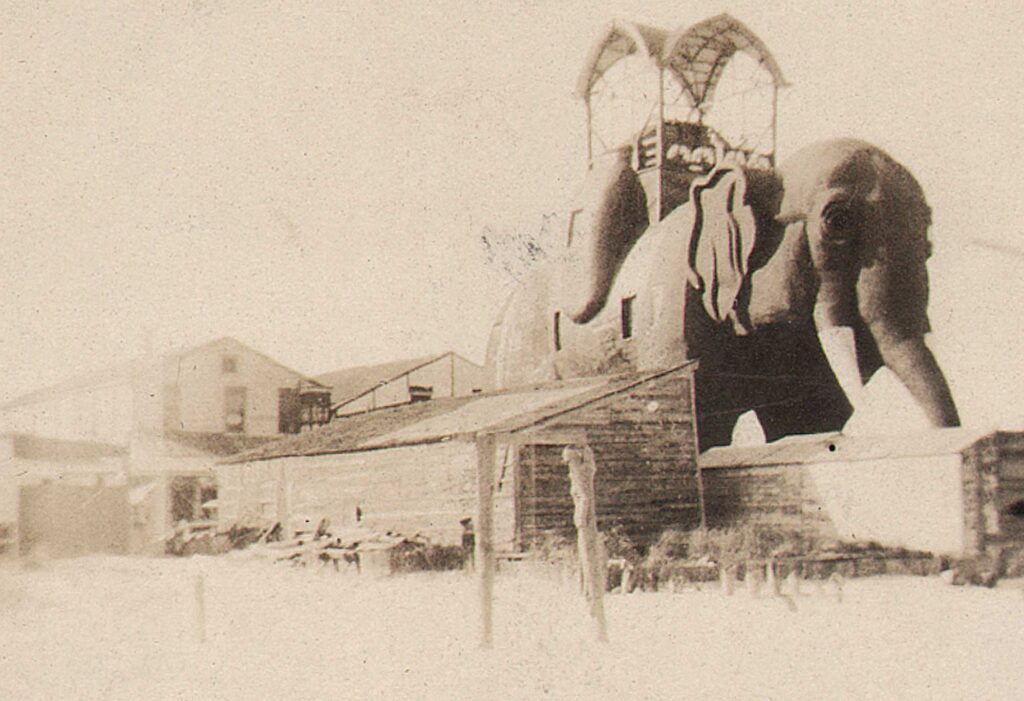
“Profile View of Lucy the Elephant from Beach Side, Margate New Jersey”: Unknown American photographer, ca. 1915-25: loose, gelatin silver snapshot : 5.1 x 7.4 cm. This image was purchased for this archive in 2019 from an Arkansas based seller and the snapshot may date to the years when a building on the grounds adjacent to Lucy known as the Mansion House- a speakeasy- was converted to a rooming house after 1920: the year the US Volstead Act outlawed the sale of alcohol. From: PhotoSeed Archive
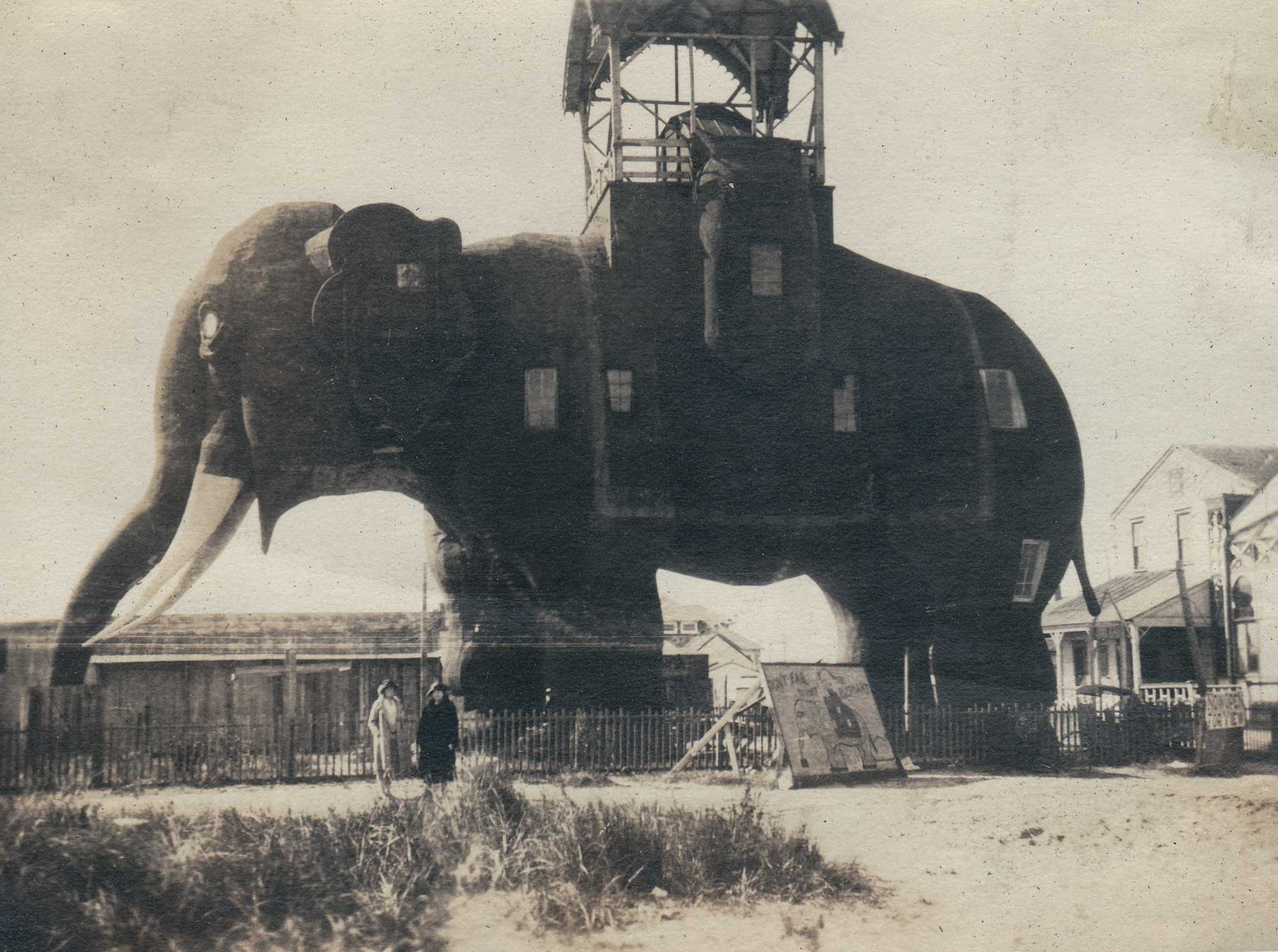
“Two Women Pose in front of Lucy the Elephant, Margate New Jersey”: Unknown American photographer, ca. 1915-25: gelatin silver snapshot pasted on larger album leaf of nine photos: 7.6 x 10.2 cm. The painted sign on the sand at center states “Don’t Fail to visit the Elephant”. Some additional statistics from Lucy’s official website: “The body is 38 feet long and 80 feet in circumference; the head is 16 feet long and 48 feet in circumference. Lucy’s neck is six feet long and 48 feet in circumference; legs are 22 feet long and 10 feet in diameter. The ears are 17 feet long and 10 feet wide. It is estimated that each weighs 2,000 pounds. Lucy’s tusks are 22 feet long; tail 26 feet and eyes 18 inches in diameter. The latter are made of glass. It is estimated that Lucy can be seen (without use of binoculars) up to eight miles. “ From: PhotoSeed Archive

“Lucy the Elephant with Automobile Campers in Summer, Margate New Jersey”: Unknown American photographer, ca. 1920-29: loose, gelatin silver print removed from album : 9.7 x 14.0 cm. Purchased for this archive in 2025 from a California based postcard dealer, the view likely dates to the mid 1920’s. By then, an earlier tent camp (it was so popular it required 40 tents to satisfy the demand) generating income for Lucy’s owner had been abolished by Margate city officials by 1920: the year the US Volstead Act outlawing the sale of alcohol took effect. However, as evidenced here, auto beach camping may have been exempted. Notice the activity in center foreground: the sedan has camping supplies arranged inside a large trunk outfitted to the drivers side resting on its sideboard- a tent set up over the passenger side door opens to larger sleeping quarters. A young boy looks towards the photographer at left behind the auto and a table set with chair is to the rear of the sedan adjacent to another auto tent. The photo was taken before 1929, when Lucy’s original howdah viewing platform was blown away in a storm- replaced after with a less elaborate version. From: PhotoSeed Archive
